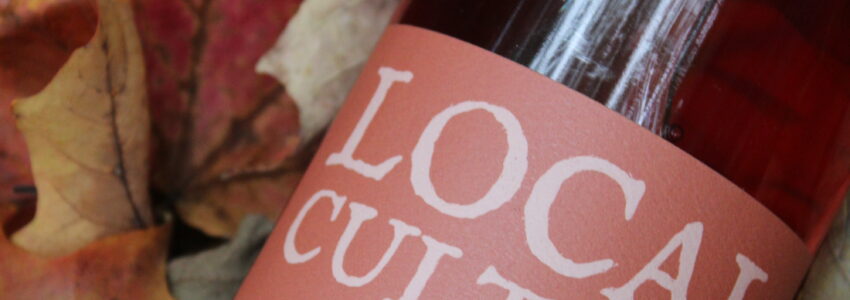Local Culture – 2022 Ramato

The inspiration behind the series from our Winemaker.
I’m not now, nor have I ever been a vigneron. Plenty of winemakers are skilled and experienced enough to flip back and forth between vineyard and cellar, but I’m not one of them. Fair enough. There are enough puzzles to solve in the cellar to keep me busy for a lifetime, so I’m happy to pursue them while somebody else handles the growing. Most of the time, there’s more than enough fruit to go around so it’s no big deal to make wine this way. In low-yield years like 2022, however, finding the right fruit (and the right amount of fruit) can be seriously anxiety-inducing. Heading into September of that year, we were struggling to find red grapes. Facing the very real possibility that we weren’t going to hit our desired targets for dry red wine, our team did what we do best: we improvised.
We’d been making orange wines for Idol Ridge since 2014, so it seemed natural that we’d fill the gap in our red wine projections with some skin fermentation on white grapes. Rolling into the season, we looked at the whites we’d been able to source and an obvious candidate presented itself: Pinot Gris.
You’d never know it from looking at the pale straw hue of the wines it’s most often used to make, but Pinot Gris isn’t actually a white grape. French for “gray,” Gris refers to its pink coloration; not quite Noir, but certainly not Blanc, either. And it’s actually not terribly uncommon for winemakers to leverage that color by soaking or fermenting it on its skins. In Northern Italy, the term “Ramato,” derived from the Italian for “copper,” is frequently applied to Pinot Gris treated in that manner.
In earlier iterations of our orange wine production, we’d pursued the technique from a highly conventional angle: using commercial yeasts, filtering, and fining as necessary. The resultant wines were interesting but shy and lacked the connective depth present in some other orange wines I’d tried. After having some success with a low-intervention orange wine in 2020, I came to the realization that loosening up on these wines in the cellar produced the complexity I’d been chasing.
In the Summer of 2021, I’d been captivated by a skin-fermented Pinot Gris from Oregon that had such a deep red color that I could have easily been fooled into thinking it was Pinot Noir. With that in my memory, I crossed my fingers and we crushed some Pinot Gris into bins for skin fermentation. Inoculated with our 2022 pied de cuve wild yeast starter, it was allowed to ferment on its skins for 12 days prior to pressing, picking up a rich pink color and plenty of tannins. We opted to soften the texture of the wine by aging it in old French oak barrels and stirring the lees regularly until some of the rougher edges disappeared. It took a little over eight months. The day after we pulled it out of the barrels we bottled it, unfiltered and unfined.
By the end of September 2022, we were able to source some Pinot Noir, and my fears of a year without dry reds were allayed. I’m glad we made this Ramato, though. Not quite red, but definitely not white or rosé, either. It’s a testament to improvisational ability, both on the part of Pinot Gris and our winemaking team.
